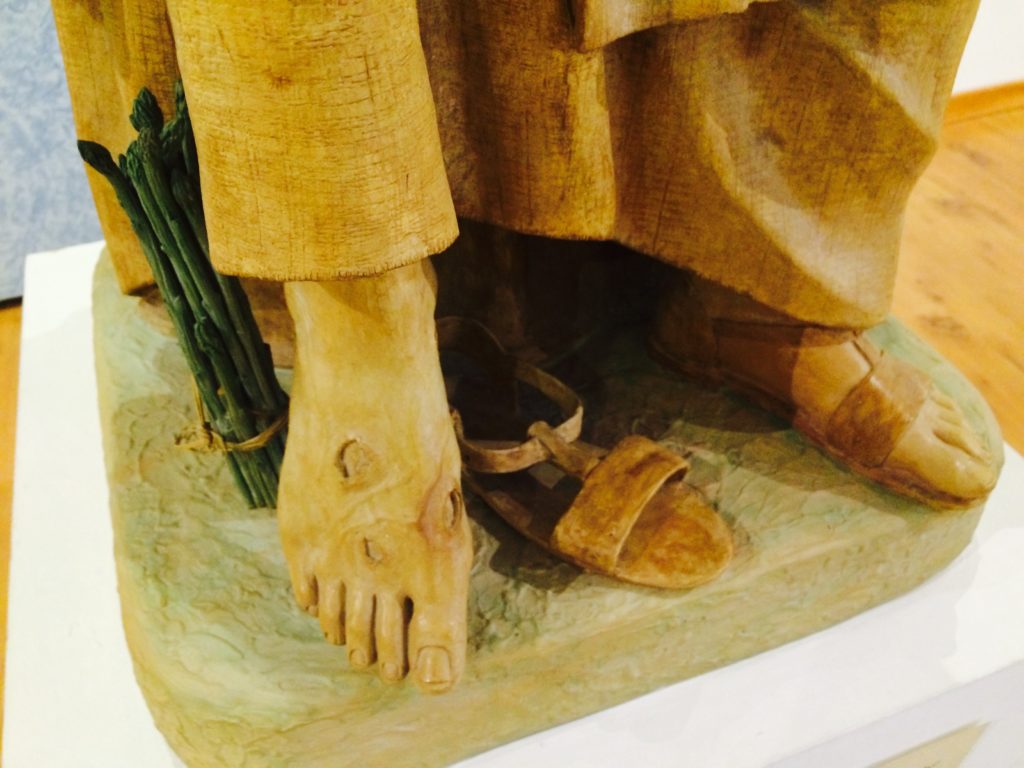
We see in the lives of the Carmelite saints – in their natural human lives and in the circumstances of their early childhood and development – certain common traits. St. John of the Cross lost his father to death when he was two- or three-years-old, and shortly thereafter he found himself in poverty in so many different aspects. Even while he was being formed in his mother’s womb, there was already the emotional trauma, so to speak, of being rejected by his father’s side of the family because his father had married his mother, who was of a lower caste in Spanish culture. So he experienced what it meant to be rejected, what it meant to be not accepted and then he experienced abandonment by the loss of his father, even though it was not obviously a voluntary wounding, but nevertheless it affected his life.
Also, we see in the life of St. Teresa, she lost her mother at the age of 11 or so. St. Therese, from the moment she was born, was given to a midwife until she was one-and-a-half-years-old because her mother couldn’t take care of her. There was this mother-child separation from her infancy until one-and-a-half-years-old. There was an abandonment there.
As adults we can easily dismiss these types of experiences and say, “Well, that’s no big deal. Children don’t know. They’re oblivious to that.” No, children are very aware of the bonding, especially between the mother and themselves. St. Therese’s mother dies when she was four-years-old. So there was a break again. And then around age10 or 11, her second mother–Pauline–goes into the convent, and there was another break. As a result of these repeated brokenness, St. Therese suffered a terrible illness of which our blessed mother healed her
Also, St. Mary of Jesus Crucified also, lost one if not both of her parents at a very, very young age.
Wherever there is an affliction, that affliction can become a magnet for God’s affection. God desires to fill all the empty places in our lives God. Wherever there was a lack of love, God wants to reciprocate. Where we are most vulnerable, God wants to recycle that pain and suffering into a redemptive experience of love.
Living out our spirituality is not like living in an ivory tower. Our spirituality grows right in the slums of your humanity, when you allow God in His infinite mercy to love you where you are poorest. That’s redemption. That’s the Gospel. That’s Jesus, who came to seek the lost. Not the righteous. Not the aristocratic. Not those who have it all together. But for those who recognize their need for the Lord and their dependence on the Lord.
Let yourself be loved. Let your heart lay itself open before God, and the only words necessary are the language of silent love. Be lovingly aware of His presence within you. Recognize your breath as having its being in God. Breathe in the breath of God.
There are only two places in the whole Bible where we see the breath of God: in Genesis, in the beginning at creation, and in John’s account of Pentecost, when Jesus as risen Lord breathes the Spirit upon his apostles and says, “Receive the Holy Spirit.” Whereas God breathed into Adam at the first creation in Genesis, Jesus breathes into His apostles at the new creation in John. He gives them His Spirit, his ruah, His breath, His essence.
Our breath has its being in God, and we need to breathe in this breath of God, breathe in the divine life, the zoe of God, to receive the Holy Spirit, to be made a new creation, to abide in the breath of the Beloved.
Very practically, you can for example, in cultivating this prayer of simplicity and prayer of recollection, you can breathe in the holy name of God. The holy name of God, and the holy name of all names is Yeshua. Yahweh saves. God heals. God sets free. Yeshua. To breathe in Yeshua, and to breathe out te amo (I love you). And to simply abide in that exchange, in that synergy, breathing in Yeshua and breathing out te amo (I love you). (to be continued)
SOURCE: Auburn Retreat, 2016. Transcribed by Sue Ellen Browder
Copyright 2017, Father Robert Barcelos, OCD
